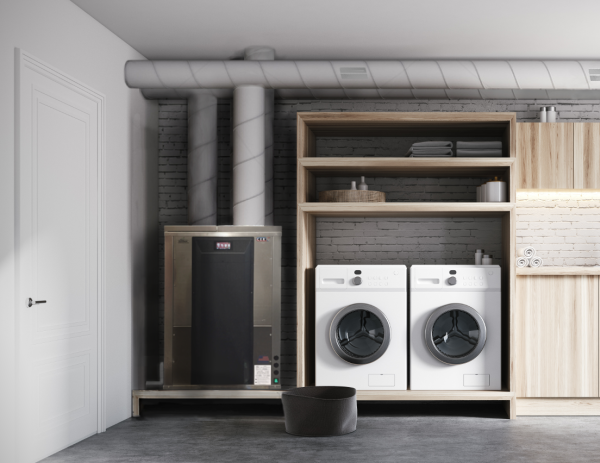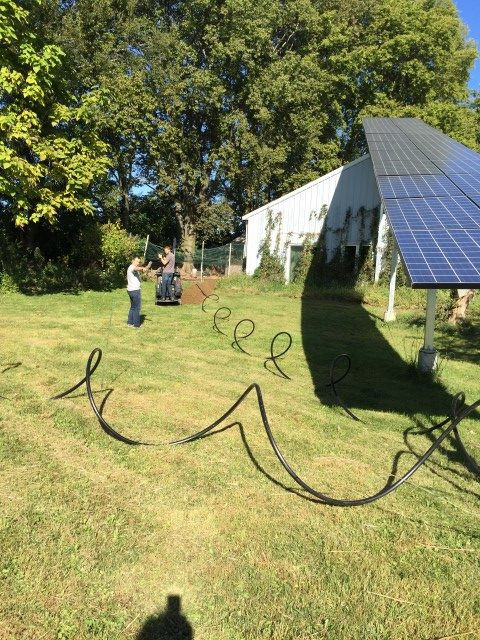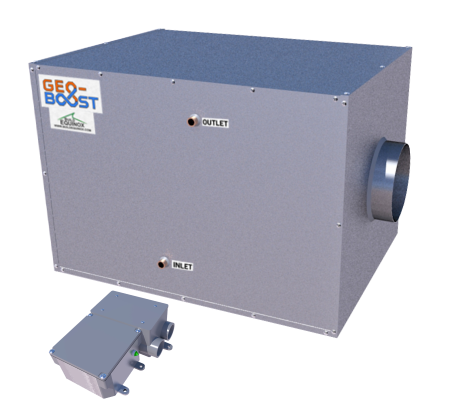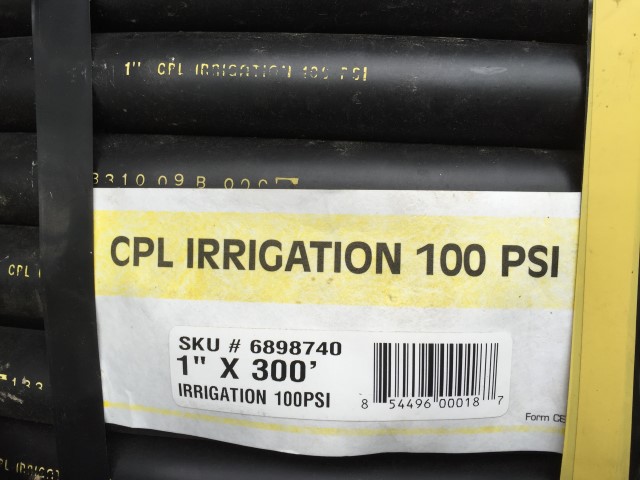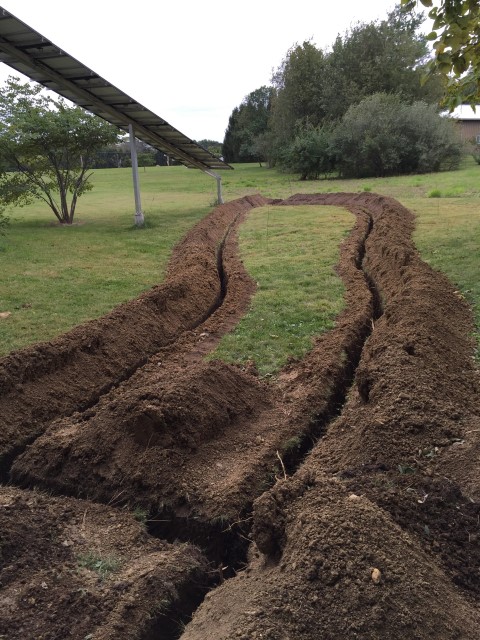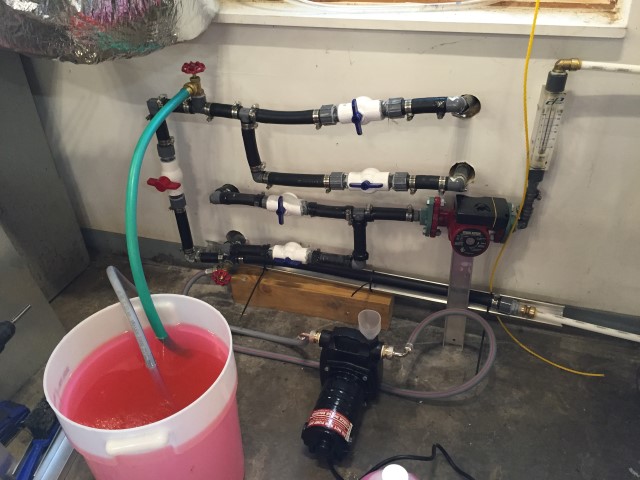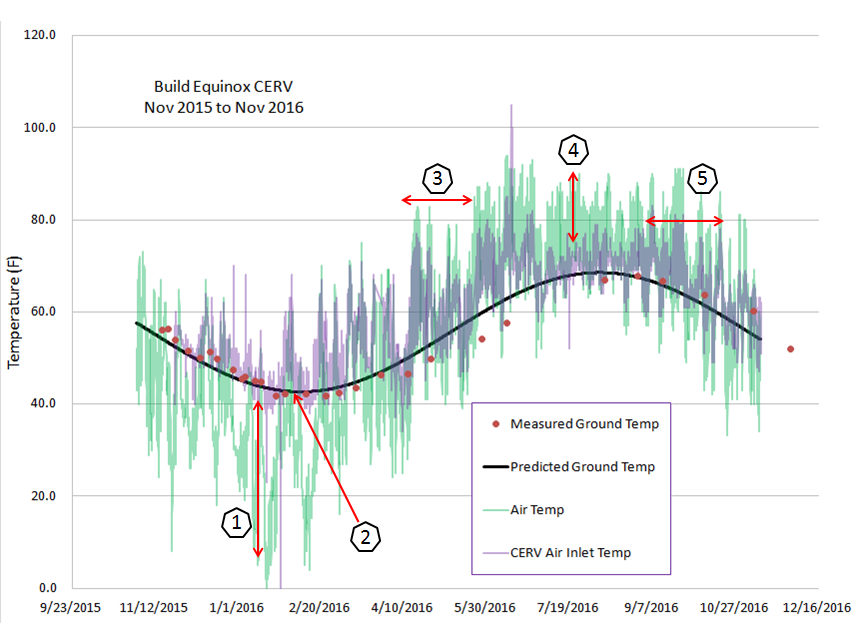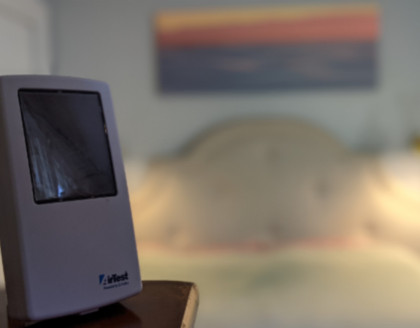Geo-Boost Report: A Year of Comfort from Mother Earth
One year ago, we released Geo-Boost, our high efficiency heat exchanger and controller for exchanging energy with Mother Earth. Thoroughly engineered and lab tested, this hydronic coil converts the CERV into a “hybrid” air-source/geothermal heat pump. Of course, we wanted to use a Geo-Boost at our Build Equinox building’s CERV, and last October, we installed 150ft and 300ft long geo-loops. We are a research based company, and monitoring real world performance is important for us to ensure that the Geo-Boost operates as designed, and to pass our experience to others.
We rented a trencher and were able to dig a 300ft long, 40” deep trench in 6 hours. The trencher rental was $250. We used 1” black plastic (recyclable HDPE) pipe that cost $70 for a 300ft coil. A short cross trench was dug so that we could also lay a 150ft long geo-loop in order to compare differences in ground loop length. Our computer simulation studies indicate that 150ft to 300ft loops, similar to the foundation perimeter of many homes, would be sufficient for good ground loop heat exchange.
Among our goals for the geo-loop system are:
1) Gain practical experience for geo-loop installation
2) Collect ground temperature data from the system in order to compare with our computer simulation model predictions
3) Monitor CERV performance with Geo-Boost operation
4) Enjoy enhanced CERV capacity and efficiency!
New homes can drop geo-loop piping into the foundation trench, saving time and trencher rental cost. A key question we wanted to investigate is whether or not heat removed by the Geo-Boost lowers foundation temperatures below freezing. Our computer simulations indicated that this would not happen. Eight ground temperature test stations were installed along the geo-loop piping at 25ft to 50ft intervals for monitoring ground temperature changes throughout the year.
After the geo-loop was installed, we charged it with propylene glycol. Unlike its poisonous automotive radiator cousin, ethylene glycol, propylene glycol is non-toxic. It is commonly used as a “brine” (refrigerator-speak for anti-freeze) in refrigerated food warehouses, solar water heater circulation loops, and as an RV (recreational vehicle) winter water system storage additive. We diluted the anti-freeze by 50%, which increases its freezing point, but will not break piping upon freezing. During winter operation, the brine loop should always be well above its freeze point even under the coldest conditions. The main reason for using an anti-freeze is to prevent bursting of the Geo-Boost heat exchanger during cold time periods when the pump is not operating. Additional information on geo-loop circulation pumps and installation guidelines can be downloaded from our website.
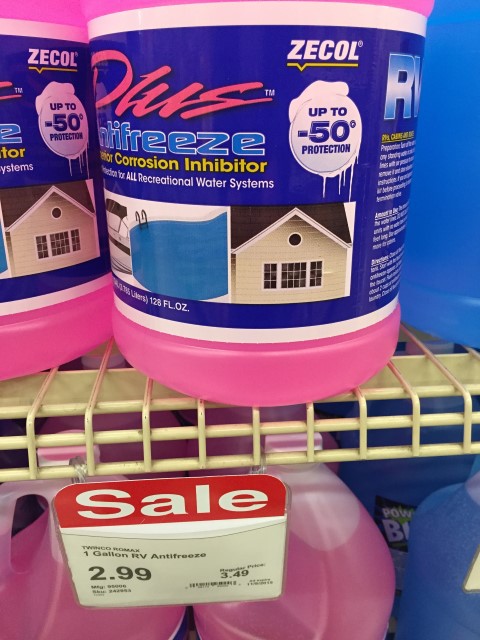 Propylene glycol was diluted by 50% with distilled water. Propylene glycol is a non-toxic anti-freeze that is often a component of shampoos, hand creams and hair gels.
Propylene glycol was diluted by 50% with distilled water. Propylene glycol is a non-toxic anti-freeze that is often a component of shampoos, hand creams and hair gels.We developed Geo-Boost with an extensive series of computer simulations in which we investigated variations of ground properties, geo-loop length and depth, climatic, and operation variations. Over the past year, we collected geo-loop ground temperature data. In the figure below, hourly outdoor air temperature data, CERV inlet air temperature from the Geo-Boost, measured ground temperature data, and our computer simulation model’s predicted ground temperature data are shown. The predicted and measured ground temperatures are within 1F to 2F of each other as shown in the plot. Also, the “phase shift” or times when the ground at 40” depth reaches its minimum (around February 1) and maximum (around August 1) are in good agreement. The agreement between the predicted and measured ground temperatures helps validates our computer model for use in other climatic regions.
The most important question, however, is whether the Geo-Boost provided a significant benefit. The green line data are hourly ambient temperatures from a local weather station. The purple line data is hourly CERV data obtained from our online CERV-ICE monitoring and control software. During winter months, the purple data hold close to the ground temperature data, reflecting the Geo-Boost heat exchanger’s ability to warm the outdoor air. Note that even when outdoor temperatures were 10F or lower, that air temperatures exiting the Geo-Boost and entering the CERV were 40F, shown by area (1) on figure above.
Winter time periods with Geo-Boost exiting air temperatures above ground temperature represent warm spells when outside ambient was sufficiently warm that the Geo-Boost controller turned the circulation pump off. Point (2) on the figure shows an occurrence of this case. If the pump continued circulating, warm outdoor air temperature would have been cooled by the Geo-Boost, causing an additional heating load. In this manner, Geo-Boost turns the CERV into a “hybrid” geothermal-air source heat pump with the CERV making the Smart decision whether to use Geo-Boost or not. Conventional heat pumps do not have this unique ability, an air source heat pump is stuck with the air temperature and a geothermal system must always use the ground temperature. Having the ability to use both lets the CERV maximize efficiency and capacity.
During the Spring swing season, the Geo-Boost controller kept the circulation pump off, as indicated by the equivalent green (outdoor air) and purple (Geo-Boost exiting air) temperature traces, area (3). As summer heat came in, the Geo-Boost controller automatically activates the circulation pump to pre-cool outdoor air. With temperatures nearly 90F, air temperatures in the 70’s were delivered to the CERV, point (4). The Geo-Boost also condenses moisture from the air, providing useful dehumidification. We have had a nice Fall season in Central Illinois, with very little heating needed for our high performance, Zero-Plus building, as can be observed in the Fall data in the figure, area (5).
The CERV at Build Equinox operates with 150cfm of air flow. On January 18, 2016, when temperatures were 0F, the Geo-Boost increased the CERV’s heating capacity from 800Watts (no Geo-Boost) to 1300Watts (Geo-Boost) during recirculation operation. The CERV heat pump COP (Coefficient of Performance, a ratio of heat delivered divided by the CERV’s electric power) was also increased from 1.8 to 2.5. Although the CERV is efficient by itself, similar to a turbocharger, the Geo-Boost provides a significant enhancement to both CERV capacity and efficiency at extreme weather conditions.
Will your application benefit from a Geo-Boost? Contact us anytime to discuss.

